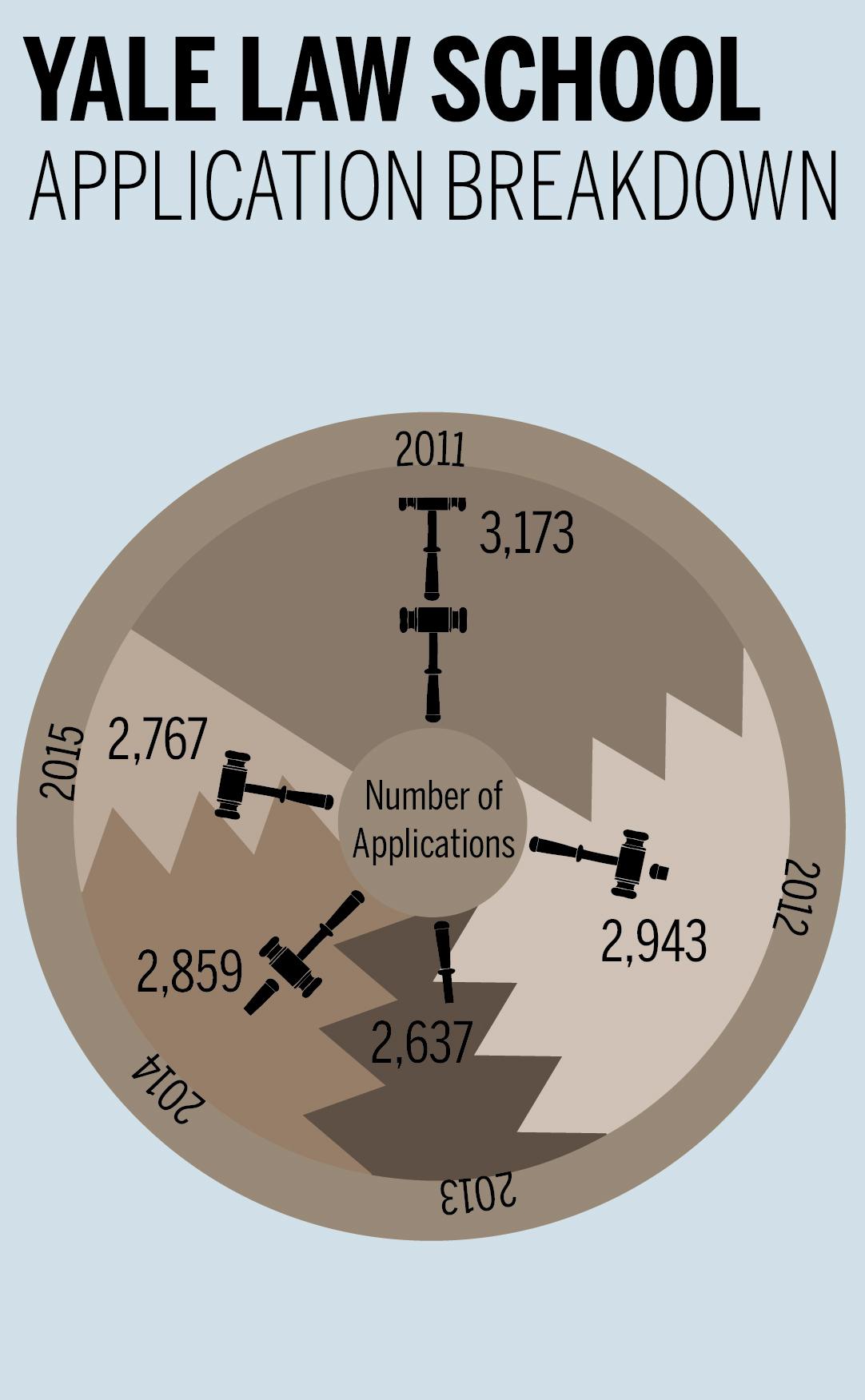
A decline in applications to top law schools nationwide may not be a concern for Yale Law School.
A Jan. 26 article published by Bloomberg News said that over the past five years, the number of applicants to the country’s top 20 law schools — as ranked by U.S. News and World Report — saw a median drop of 18 percent. The article also highlighted that applications to Yale Law School declined by 13 percent during the same period. Despite the dip in application numbers, though, Law School spokeswoman Janet Conroy said the volume of applications received by the school in the past five years has remained “within the school’s historical range.”
According to reports from the American Bar Association, the number of applicants to the Law School dropped from 3,173 in 2011 to 2,767 in 2015. The class size, however, remained constant at around 200 each year. The GPA and LSAT performance of admitted students also remained stable, according to the ABA.
“The biggest drivers of the decline in law school applications nationwide have been the shrinking of the private legal employment market, combined with the rising amount of debt among law school graduates,” Asha Rangappa, associate dean for admissions and financial aid at the Law School, said. “We are fortunate to still have more qualified applicants than we can accept, which has allowed us to keep our class size the same.”
Students’ fears about incurring debt when high-paying jobs are not as plentiful also contributed to the trend of declining applications, said Wendy Margolis, director of communications for the Law School Admission Council, which administers the LSAT.
Yet, Margolis said the latest data shows that as of Jan. 29, the number of ABA applicants — students applying to law schools approved by the ABA — increased over the past year by 0.9 percent and total ABA applications increased by 0.1 percent.
Sarah Zearfoss, senior assistant dean of admissions at the University of Michigan Law School, told the News that the law school applicant pool nationwide decreased by half between 2004 and 2014, and last year’s pool alone saw a 20 percent decrease in number of applicants who scored high on the LSAT.
“Thinking arithmetically, one has to deduce that a decrease of that magnitude necessarily results in a different selection process for any or every school.” Zearfoss said. According to the Bloomberg article, Michigan has slashed its first-year class size by 26 percent since 2011.
Changes to the selection process can be readily apparent and not, Zearfoss said. For example, more obvious changes in how schools admit their students can include smaller class sizes, lower median LSAT score requirements or fewer women and fewer ethnic minorities admitted to law school. Schools may also make compromises based on “soft factors,” such as work experiences and undergraduate education background, Zearfoss added.
She added that the changes in the selection process will be smaller if a law school has a smaller class to begin with and enjoys a high yield rate.
Still, Conroy said the Law School has not changed its policies or recruitment efforts in any way.
Yale Law School students interviewed said they are not surprised by the decline in application numbers.
Valerie Comenencia LAW ’18 said she heard more students attend graduate or professional schools when the economy is not performing well and they cannot secure a job. Now that the economy is picking up, it is reasonable that fewer students apply to law schools, Comenencia added.







